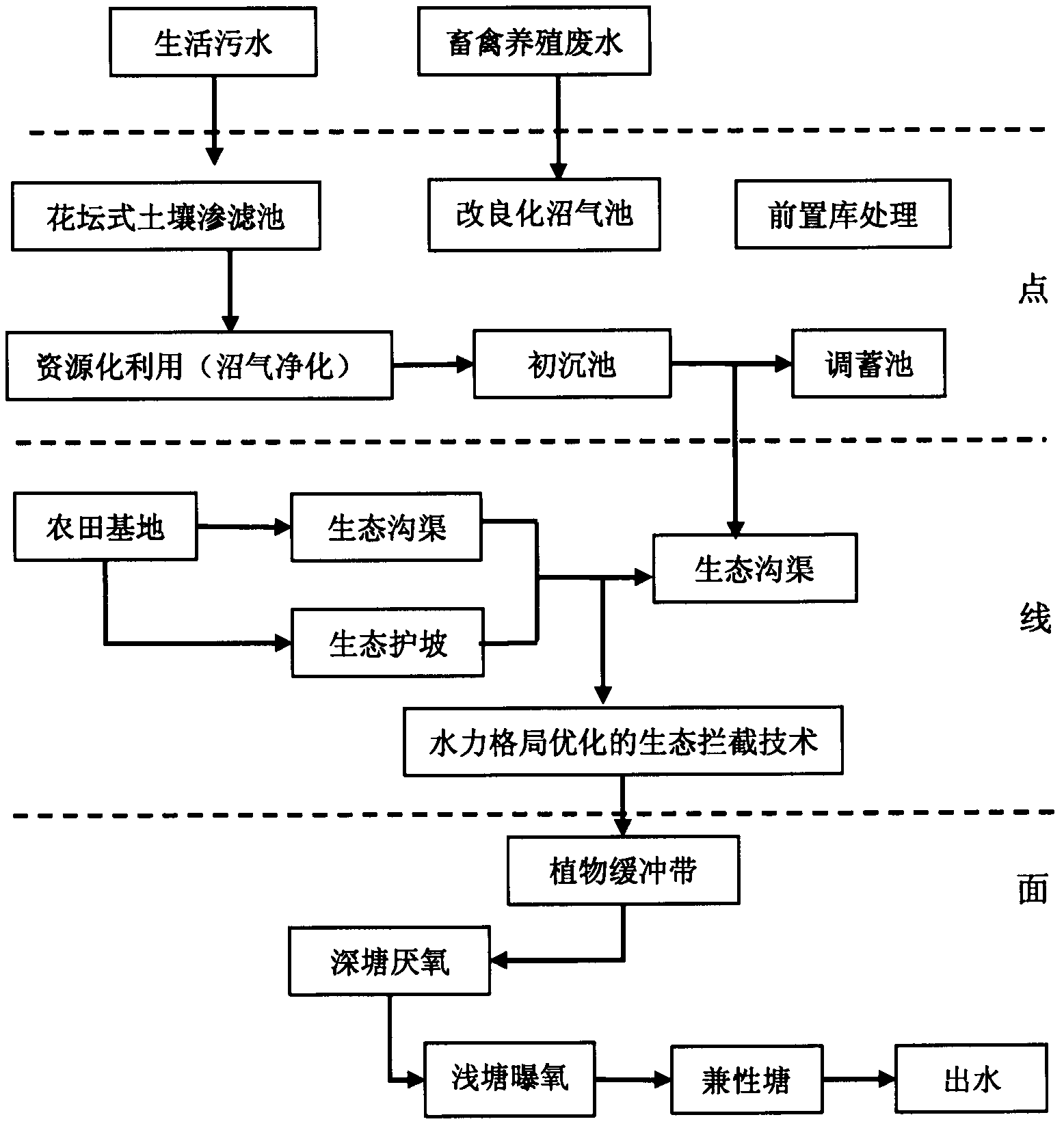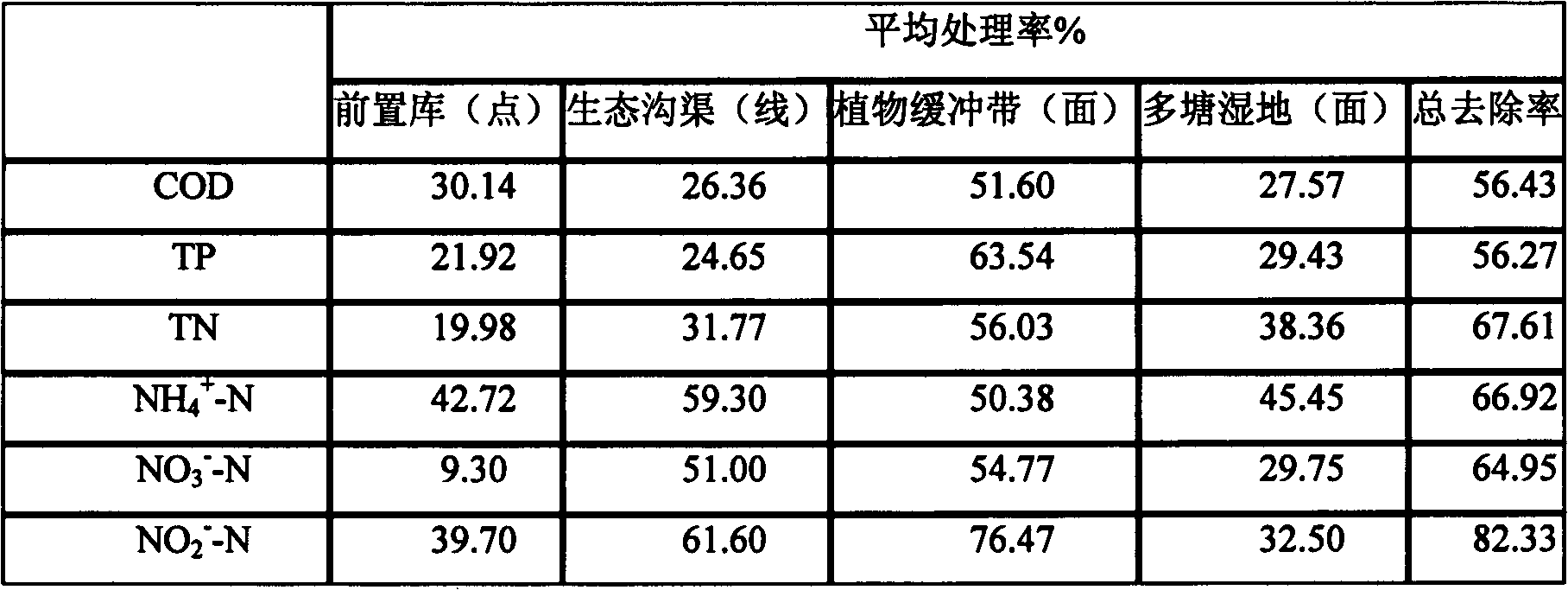Surface source pollution control technology based on point-line-surface stereo configuration
A non-point source pollution and control technology, applied in the field of new technology, can solve problems such as non-point source pollution, achieve low operating costs, simple operation and management, and good application prospects
- Summary
- Abstract
- Description
- Claims
- Application Information
AI Technical Summary
Problems solved by technology
Method used
Image
Examples
Embodiment Construction
[0023] (1) Analysis of pollution sources and resource utilization from the point of view: ① Control of rural domestic sewage: change the way the original washing wastewater is discharged randomly, build a flower bed-style soil infiltration tank, and recycle domestic sewage. ②Convert domestic sewage and pig-raising wastewater into biogas and fertilizer, and the volume of the pool is 1-2m per population 3 Design and construction according to "Standard Atlas of Rural Household Hydraulic Digesters" (GB / T4750-2002). At the same time, the toilets are transformed, and the manure is directly discharged into the biogas tank for fermentation, and the biogas is obtained as household gas. On the other hand, the biogas slurry can be used as fertilizer for farmland crops. ③The front-end storage system utilizes the local natural clear water pond, and leads the mountain spring water to the clear water pond through natural ditches, so that the villagers can concentrate on washing and washing v...
PUM
 Login to View More
Login to View More Abstract
Description
Claims
Application Information
 Login to View More
Login to View More - R&D
- Intellectual Property
- Life Sciences
- Materials
- Tech Scout
- Unparalleled Data Quality
- Higher Quality Content
- 60% Fewer Hallucinations
Browse by: Latest US Patents, China's latest patents, Technical Efficacy Thesaurus, Application Domain, Technology Topic, Popular Technical Reports.
© 2025 PatSnap. All rights reserved.Legal|Privacy policy|Modern Slavery Act Transparency Statement|Sitemap|About US| Contact US: help@patsnap.com


